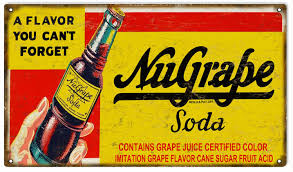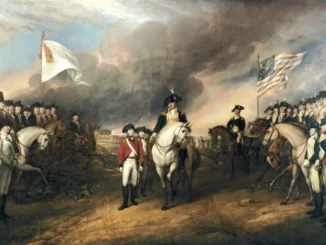
A Few Immutable Laws of Economics
The prices of gasoline and many other commodities are trending upward these days. The old economic law of supply and demand is, to a large extent, driving these trends, as it always does. Relative scarcity of a desired product leads to unfulfilled demand, which then acts to drive prices up, in anything but a controlled economy. I say “relative” because one can probably still buy a buggy whip at pretty much the same price it brought in 1890. On the other hand, hoarding toilet tissue in times of anticipated shortage creates a kind of artificial shortage, with resultant demand that will drive market prices upward, until either production increases or the panic subsides.
Then there are shortages created by, say, world political conditions. The responses to these kinds of shortages may be higher prices or, prices may remain stable through rationing and/or price controls. I don’t factor in the Black Market here, although that may be the real market in times of imposed government controls. These are the conditions that existed during World War II, when our access to oil was severely curtailed and the government resorted to a system of rationing. While the price of a gallon of regular gasoline remained fairly stable during the period of 1942-1945, the availability of said product was controlled by what we used to call “ration cards,” along with stickers for your car window that told the service station attendant the category of priority to which the owner was entitled. We compensated, in part, by carpooling, and in part by simply limiting our trips to those which were absolutely necessary. Did people complain? Of course they did, but there was a spirit of patriotism and community responsibility back then, which seem to have been left behind in these times of “Me First” and “Entitlement.”
We lived about fifty miles from the New Jersey shore when I was a boy during the war. In summer we saved our gas coupons so we could make that one trip to the shore that would give us a much-needed break from the humid August life of West Orange. It seems that everyone in New Jersey had similar plans, because we used to say that if all the cars in the state were lined up end-to-end, someone would pull out and try to pass. In that regard, things haven’t changed all that much.
In those glorious moments we would drink in the salt air, build sand castles and splash in the surf to our hearts’ content. Well, almost. I can
remember the smudges of smoke on the horizon off Sandy Hook as another Allied tanker ship was torpedoed by a German U-Boat. There would be great blobs of oil in the water, along with all manner of flotsam that made swimming a challenge. Then there were the bodies, bloated and bobbing in the surf, that provided the ultimate grim reminder that we wee at war. More than once we drove home in somber silence, as we contemplated the horrors attendant to being a merchant marine. We were both proud and grateful whenever we spotted a Navy patrol plane monitoring the shore areas. We knew they were keeping the threat submerged, even though the Germans were exceedingly brazen. Their U- boats were occasionally spotted within a few miles of the coastline, and there were clandestine landings, via rubber boat, of Axis saboteurs It was an awfully long coastline, and we were constantly on the alert for anything that seemed out of the ordinary. We kids often felt that we were part of the Civil Defense Corps, with our dollar telescopes that could see for feet and feet out to sea. But that was then.
It’s a vastly different world out there today. Although we still occasionally see flashbacks to the wartime days in old newsreels, and photos posted online, and we yearn for the days of twenty-cent gasoline, those days are but dim memories of us octogenarians who cling to the old ways in a nightly dream. If we can assume that inflation has brought our dollar’s buying power down to one twentieth of its 1945 value, that means gasoline should cost around $4.00 today. Okay, so that’s close to the actual Texas price, but those data are skewed by the realities of California, where they’re paying well over a buck more. Likewise, if the average weekly wage was $50.00 back then (it was really less), it should be $1,000 now. So what’s wrong with this picture? Well, many wage warners are making quite a bit more than a grand a week, on average, so that gallon of gas is actually more of a bargain than it was 75 years ago. And for a bonus, most of our automobiles get better gas mileage now than in 194X.
The average family drove about one-half a car back in the ‘40s. If you had a house with a one-car garage, you were blessed. Then came a population boom and the burgeoning suburbs, a doubling of the population, fifty-mile daily commutes, and teenagers who demanded their own set of wheels by age 16. The $1,500 car was now priced at $25,000, and the price continues to spiral ever-upward., but those numbers are still more or less aligned with long-term inflation. We’re now a nation on wheels, and if you don’t have a three-car garage, you’re just not keeping
up. But the price of gasoline, while we gripe about how high it is, has remained remarkably stable, when inflation is factored in. Have you wondered why most people in Europe are driving Peugeots, Fiats and Asti Spumontis? Because the price of their gasoline is hovering around $8.00, while we have been blessed with an abundance of reserves (thank you, Permian Basin) and our production levels have increased exponentially over the years. We have actually met the challenge of supply and demand, and market forces really are working, generally speaking..
A final economic factor to consider is productivity. American workers are the most productive in the world. Automation and robotization have forced the replacement of production line workers, requiring them to acquire new skills in jobs that were not in existence before. A person who used to fix those old conveyor belts is now programming, operating and maintaining the robots that once replaced him. As a result, the costs of production are down, allowing the manufacturer to produce more widgets, at a better price, with even better reliability, than before. So, theoretically, the price of goods has become more affordable for everyone. In 1945, the poverty line was an annual wage of around $2,500. Those earning less than this had no cars, refrigerators were really “iceboxes,” there was no air conditioning, and the average home for four measured around 800 square feet. If you had a radio, you had a home entertainment system. The first television sets of the late ‘40s cost upward of $1,000, if you bought the wood-encased console model. And they were all black and white, with rooftop antennae. The increases in productivity have made gigantic color TVs available today at close to the 1947 price.
All in all, we live like kings today, in comparison with the “old days.” Even a family in poverty has at least two TVs, a late model car, a full line of modern kitchen appliances (who ever heard of an air fryer in ’45?) Our productivity increases have allowed us to demand more of the market’s largesse, which it is happy to provide, as long as we have a credit card. Thanks to the “demand” side of the equation and the market’s increasing ability to provide the “supply” function, we’ve never had it so good. As a result, we consume more and more and live longer lives. But not always. Our dietary excesses have introduced many diseases that were not statistically significant all those years ago, and our life expectancy has actually decreased in the past twenty years.
But all those annoyances can be fixed, with advances in modern medicine, better foods with less sugar, salt and cholesterol, and above all, a return to the old days of self-discipline and occasional self denial. My question is this: do we still have the strength of character, the spirit of community, and a strong sense of patriotism that produced the Greatest Generation? Or will we continue in our downward spiral, which is driven by excessive consumption, self-absorption, and that newest of pandemics: entitlement.
I hope we’ve pushed a “hot button” here and there, and that continued dialogue topics like these will become more the norm than the outlier.
George Thatcher, 2022
George is an American Bad Ass. He grew up in Jersey, flew B-52s in Vietnam, taught English, Spanish and other languages to children around the world, makes his own salsa, has been known to enjoy a beer or two and has called Lubbock home for a few years, just to entertain the locals. Welcome to Raiderland, Major. We are going to feature some of his writings going forward. Some new, some old. Some rhyme, some don’t. When it comes to George, there’s no box. So… enjoy our friend and enjoy his writings! – Hyatt



